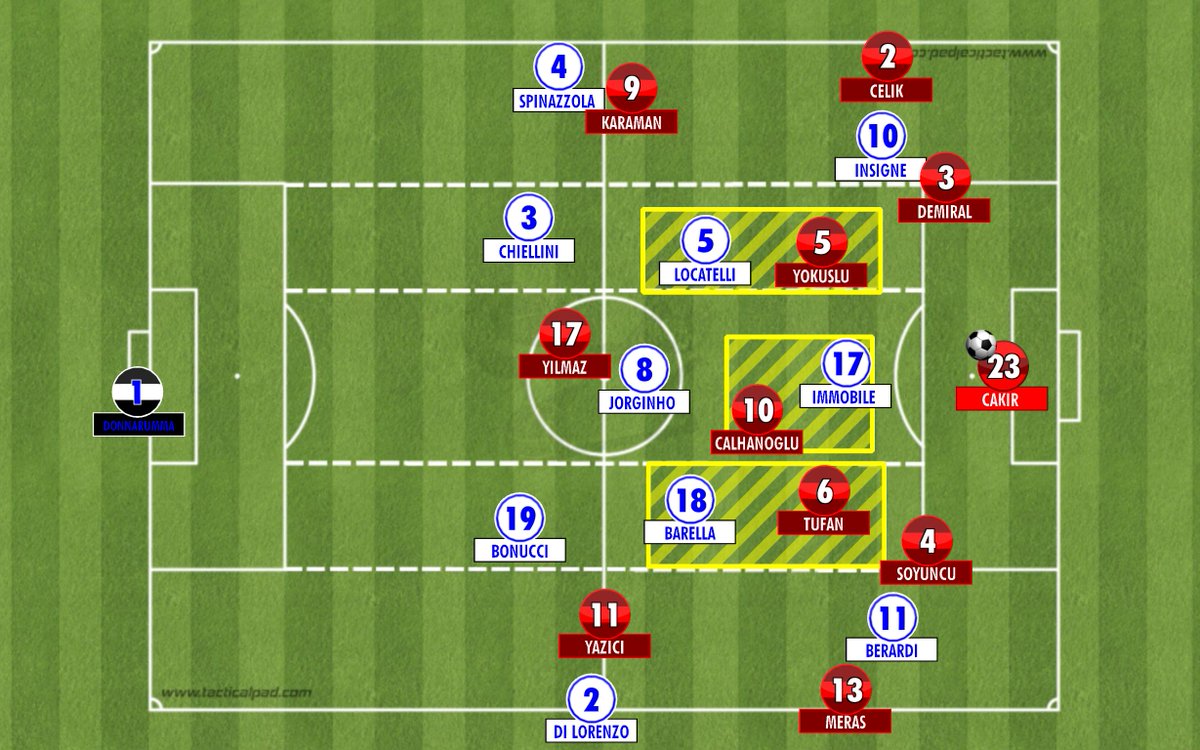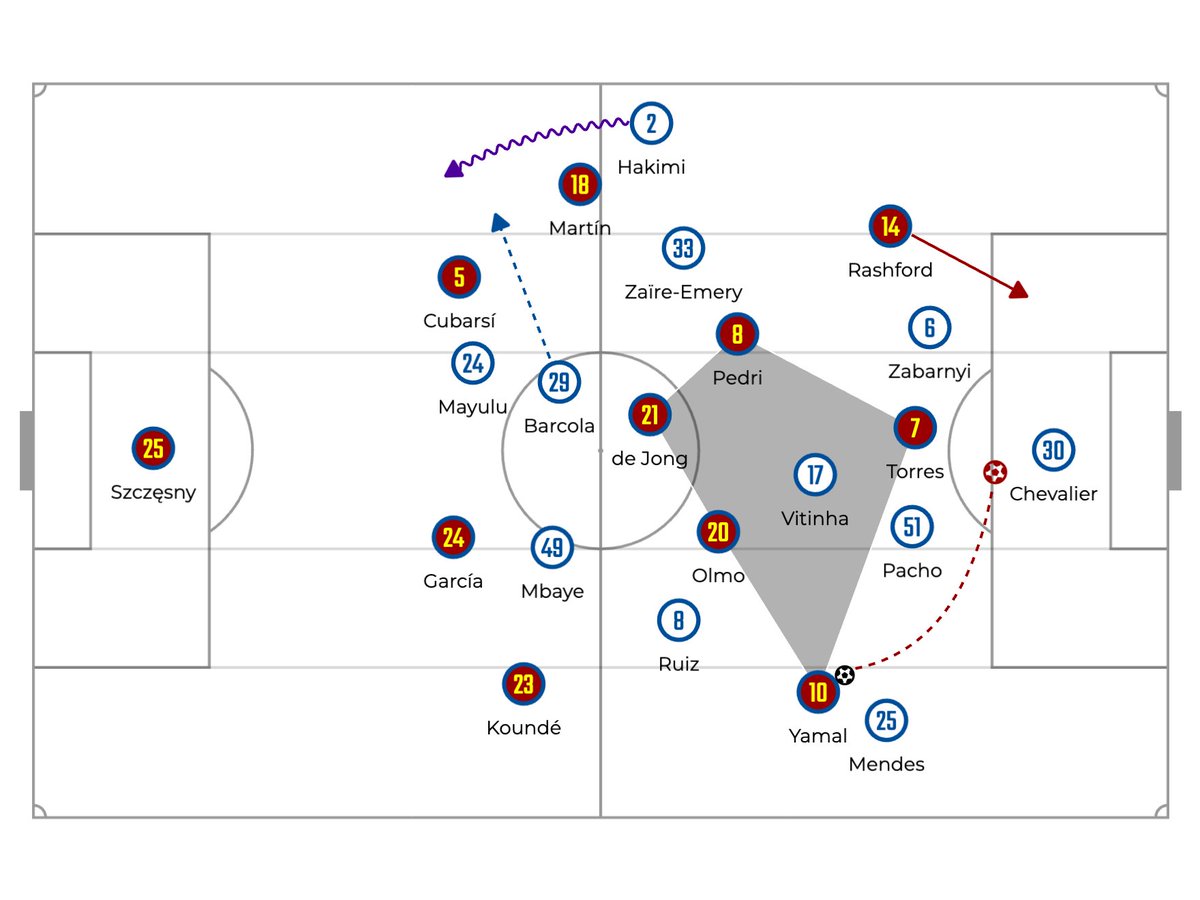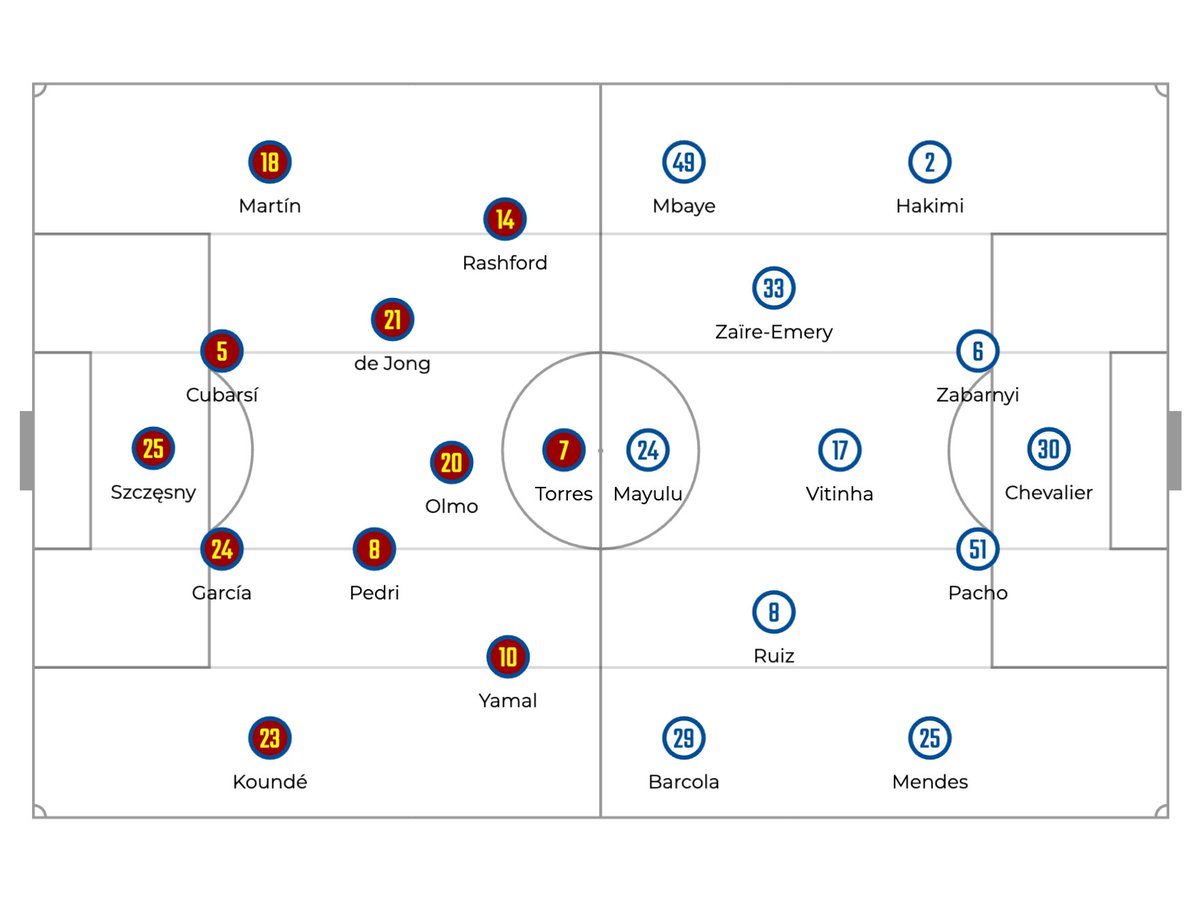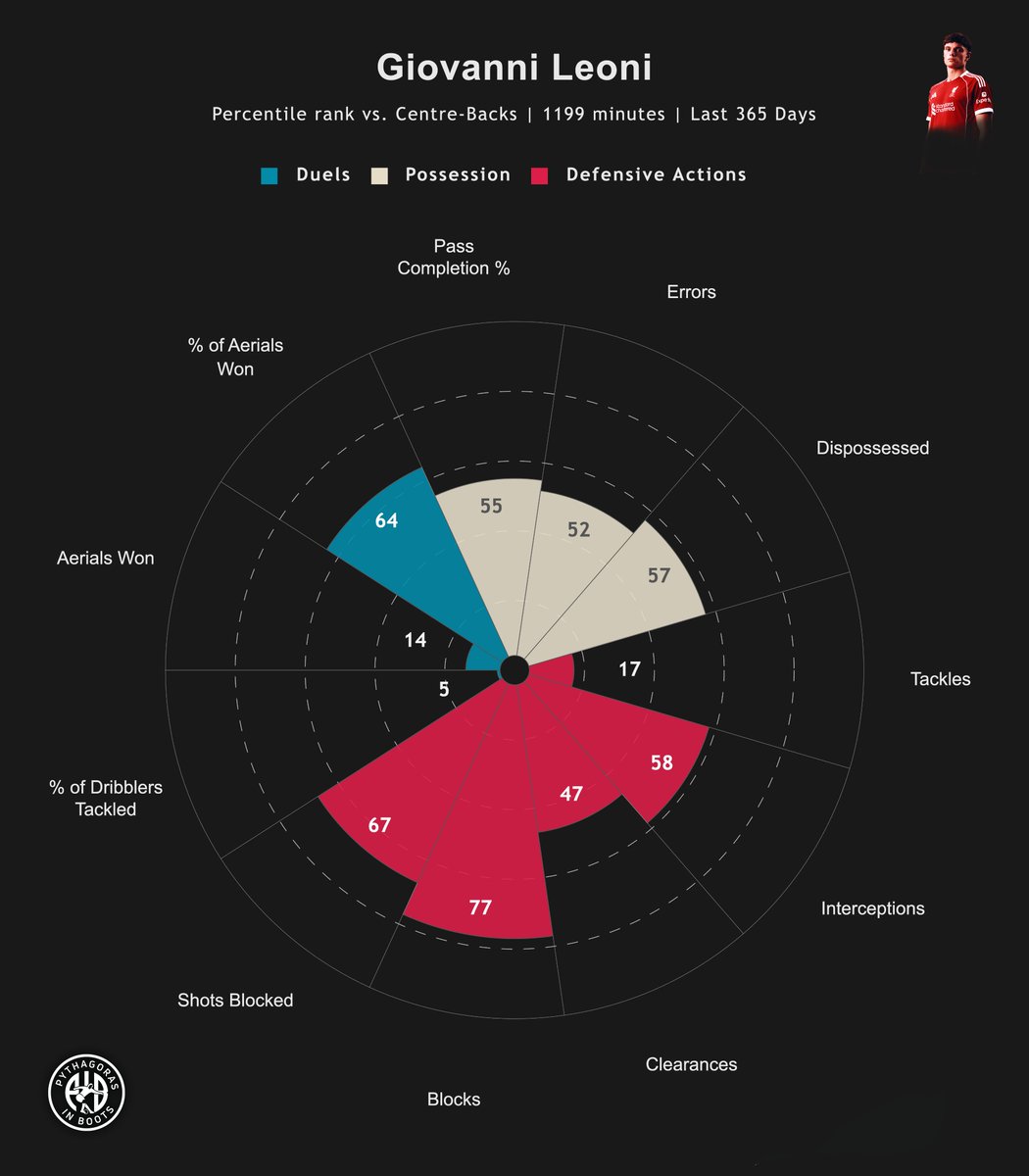#TURITA Euro 2020 - Tactical Thread
Key Points:
- Locatelli dominates the left half-space
- Turkey ineffective in possession
- Italy switch between having one advanced fullback to using two
- Di Lorenzo > Florenzi?
CC: @TacticalPad
#EURO2020 #TUR #ITA
Key Points:
- Locatelli dominates the left half-space
- Turkey ineffective in possession
- Italy switch between having one advanced fullback to using two
- Di Lorenzo > Florenzi?
CC: @TacticalPad
#EURO2020 #TUR #ITA
Italy's build up play in their own third ensured safety in possession and ball progression largely due to their numerical superiority and Turkey's poor pressing.
Bonucci, Jorginho and Barella combine on the right, while Chiellini, Spinazzola and Locatelli combine on the right.
Bonucci, Jorginho and Barella combine on the right, while Chiellini, Spinazzola and Locatelli combine on the right.

Italy's build up allows for the central defenders and deepest midfielders time on the ball to find the runs of Barella and Berardi who attack the right half-space, while Insigne routinely beat Celik on the opposite side.
By looking at Turkey's build up, it's no surprise that they struggled to make any progress with the ball. Immobile can shield forward passing options, while Locatelli and Barella follow in support. The Italian wingers can press the central defenders and shield the fullbacks. 

Moving on to how both teams attack, Turkey only threatened on the counter-attack. This could be a warning to Italy as stronger teams may take advantage of this.
Yilmaz attacks the side the ball is on from a central position, while Yazici or Karaman attack from their wide areas.
Yilmaz attacks the side the ball is on from a central position, while Yazici or Karaman attack from their wide areas.

Italy dominated this game. Very early in the match Spinazzola and Insigne combined in the left half-space and wide areas to pull Celik from his position creating pockets to attack in the Turkish low-block. 

Once Italy saw how much success attacking the left brought them, they began to commit. By pulling Celik from his position, Locatelli could take a more advanced position in the left half-space while Insigne and Spinazzola kept possession. 



It should be said, however, that Italy were underwhelming in the first half and underperformed considering how often they were causing Turkey trouble. Very few shots or clear cut chances came from Italy during their long periods of possession.
Italy would look to stretch play on the right flank through Florenzi or Di Lorenzo and Berardi, then move possession to the left quickly as Berardi and Barella take up more central positions.
This is Locatelli's world and we're just living in it. After a rough first half where he had little influence, Locatelli was afforded more time on the ball due to Berardi, Barella and the substitute Di Lorenzo attracting the attention on the right side.
Spinazzola provided width on the left, forcing Celik to mark him, while Insigne acts as a second striker in the left half-space while Immobile remains central. This forces Demiral & Soyuncu to make frequent decisions on who to mark and when. A recipe for disaster. 

After a rough first half, Italy emerge as deserved victors. Locatelli has all but cemented his starting place should Verratti return from injury.
Turkey were largely uninspiring. Their title of "dark horse" is quickly being forgotten after a disappointing start to #EURO2020
Turkey were largely uninspiring. Their title of "dark horse" is quickly being forgotten after a disappointing start to #EURO2020
If you've enjoyed this thread, consider following and retweeting it as we will be doing post match threads for all the games during #EURO2020 , as well as match previews for all the upcoming match days on our website: pythagorasinboots.com/euro-2020/
• • •
Missing some Tweet in this thread? You can try to
force a refresh























